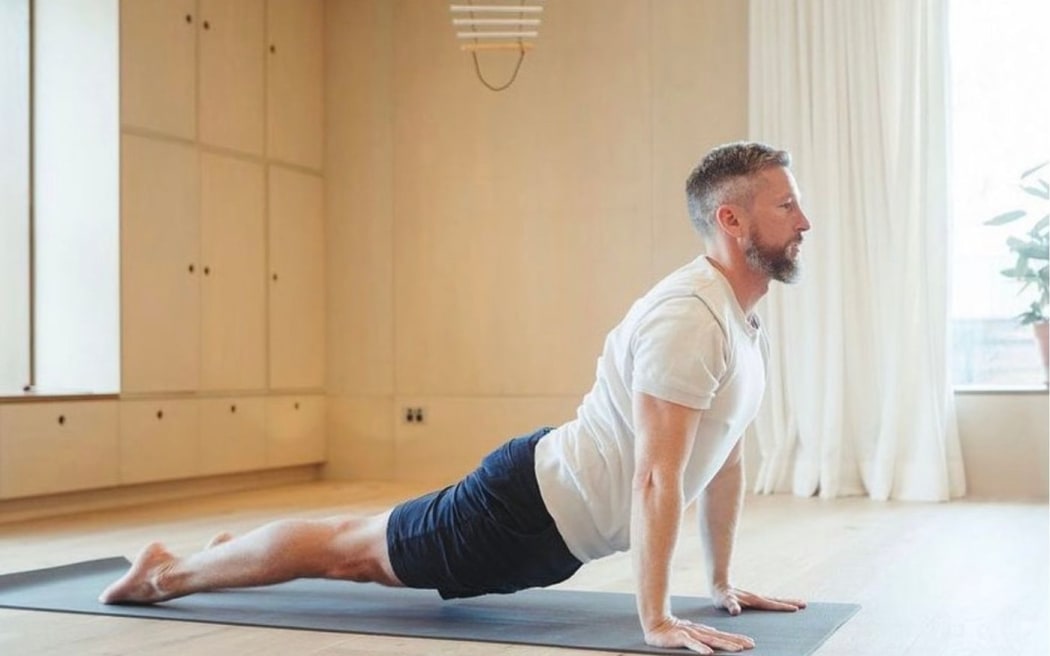When Chris Thompson-Lang served with the Australian military in Afghanistan, he felt mentally prepared to witness the fall of his fellow soldiers. It was the suffering of civilians that was his "undoing".
When Chris returned to Australia, the sound of his two kids crying triggered more stress than he could handle.
Discovering yoga – and its powerful ability to help get stress out of the body – was what really turned his life around.

Chris Thompson-Lang Photo: Supplied
Chris now teaches trauma-aware yoga at Front Line – a yoga programme for military veterans that he co-founded.
"I'm just very grateful that I came across the practice of yoga, and I could slowly rebuild my capacity and my life," he tells Jim Mora.
In 14 years as a combat engineer, Chris detected and removed improvised explosive devices – IEDs – in missions to East Timor and Afghanistan.
Back in Australia, separated from his children's mother, he ended up living alone and drinking heavily.
"I felt I couldn't be around my children and I turned to alcohol to try and calm myself down but it became quite problematic."
Walking to the pub one day, close to broke, Chris saw a yoga studio offering 10 days of yoga for $20.
He walked inside, took his first yoga class, and for the first time in nearly two years had some respite from constant thoughts of guilt and shame.
"I realised at the end of the class that I'd actually had a break from myself."
After Chris started doing yoga every day, he began sleeping better, eating better and building up the capacity to improve his relationship with his children's mother and spend more time with them.
Eventually, he received a medical discharge from the military (for PTSD, major depression and alcohol misuse) and retrained as a yoga teacher.
The hypervigilance that comes with PTSD changes the way the nervous system responds to "negative sensory inputs", Chris says.
When uncomfortable emotions are triggered, our breathing and our muscles suffer.
"If your muscles are tense then you're increasing not only the oxygen demand to those muscles but also the need for stress hormones to keep them tense."
Yoga techniques such as long exhalations and releasing the shoulders help facilitate the releasing of these negative emotions from our bodies, he says.
Trauma-aware yoga helps people with occupational trauma calm their own nervous systems via conscious breathing, conscious movement and the conscious release of muscular tension.
"If you're doing a regular ten-minute practice of movement with deliberate breath… you can actually train your body to go into that place when you're met with something that is triggering."
Yoga is not only beneficial for people with high-stress jobs, though, Chris says. The practise of conscious breathing and movement can help anyone better manage their own stress and develop greater self-awareness.
"It's a nice opportunity to give the brain a rest and give it some nourishment."

